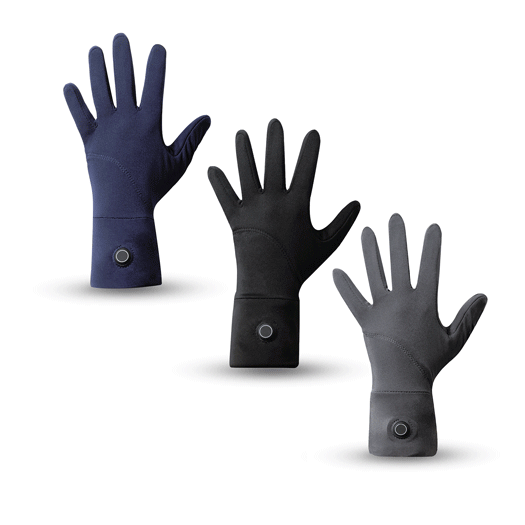All of a sudden, I had a severe case. Navigating what to do wasn't easy. I faced all sorts of hurdles and wrong turns. Here are some takeaways I've gathered from my own experience dealing with Raynaud’s. The following is just one frosty's perspective. I hope you find something here that helps you on your journey.
1. Raynaud’s is not well understood/No one has it all figured out.
With some diseases, doctors get to look at their patients with an optimistic twinkle in their eye and say “I know just what will clear this up!” Sadly, Raynaud’s is not one of those diseases. At least not for me.
I remember my doctor saying, when first diagnosing me: “Unfortunately, with Raynaud’s, we don’t have medications that work for everybody.” Looking back, I think he was trying to say “It’s likely this will never get better, but we can try some stuff” without bumming me out too much right out of the gate.
At the time, I took what he said to mean that it might take some time and careful consideration to find the right treatment but that something eventually would work. Because it had to. I reasoned: If we can land a man on the moon, we can make my blood vessels stay open.
Well, I tried everything from Botox to laser treatments and everything in between, and unfortunately we just haven't taken that one giant step for frosty-kind yet.
2. There are resources out there/Be careful.
It’s always a good idea to get a “second opinion” from different healthcare providers and to remember that no individual doctor’s opinion is the "gospel truth.” I think it's equally important to hear from a variety of sources and from Raynaud's patients themselves. After all, they’re the ones in the trenches, and they have the most at stake.
Luckily, conversations about Raynaud’s have been posted all over the Internet. You may want to start by reading up on the latest Raynaud’s news from major media outlets; checking out what respected medical institutions like the Mayo Clinic and Johns Hopkins are saying about Raynaud's; googling your specific Raynaud’s questions; searching for “Raynaud’s” threads on Reddit; and joining Raynaud’s groups on Facebook.
For example, Facebook Groups have a search function, so they are often a treasure trove of easily accessible Raynaud’s-related anecdotes. When I was considering getting Botox injected into my hands and feet as a possible treatment (no pain, no gain, right?), I typed “Botox” into the search box in a few Raynaud’s groups and found conversations posted by fellow patients who got Botox for their Raynaud’s.
Be super careful though: Anecdotes aren’t scientific data. However, I’ve personally found anecdotes to be useful when I start to add them up and notice themes and common threads.
Oh, and when embarking on any research mission, be sure to steel yourself for the possibility of disappointing information and disturbing images.
In fact, it’s probably a good idea to assess your mental state before digging too deep. Ask yourself if you're feeling negative or agitated already. If yes, it's probably not a good time to research Raynaud’s.
Are you in a good headspace? Can you limit your research to 20 minutes or less? Are you feeling like the information you glean will empower you to make the best decisions for your health? If you can answer yes to these, it may be a good time to do some research.
For many people though, googling Raynaud’s may be completely unhelpful. So if you know that's you, don’t force it. You may want to ask a spouse or best friend — someone who genuinely cares about you — to research questions you might have.
3. Go easy on yourself/See it for what it is.
Raynaud’s flare-ups aggregate. When you have a bad case, flare-ups don’t happen in a vacuum. They aren’t one-offs. When they start to happen many times a day, even dozens, the problem becomes bigger than just having cold hands. It can wear a person down.
Life is stressful and painful enough. When you add in daily, even constant worry about the consequences of having your fingers turning off too often (such as ulcers forming on the fingertips) — that’s a significant burden to carry.
Know that you’re not alone. Seek out counseling; have heart-to-hearts with friends; and post your own story on a Raynaud’s group online. Sometimes solidarity is all you need at the time.
And always try to remember: Yes, Raynaud’s is technically “rare,” but millions of people are dealing with the exact same thing you are. We need to stick together; we need to share our stories so people understand how absolutely life-altering Raynaud’s can be; and we need a lot more scientific research to be conducted so better medications can be developed.
I hope these thoughts have been helpful. I have lots more to say about navigating Raynaud's, but I’ll save it for another edition of the Cold Hands Blog :)
Toasty Touch® Ultra Thin Heated Gloves

£102.00
The heat you need without the bulk. Warm your hands for hours and keep using them too with the thinnest heated gloves ever created. "I've finally found something that helps my Raynaud's!" "Life changing!" "Game-changing!" "No more white fingers!" "I've… read more







